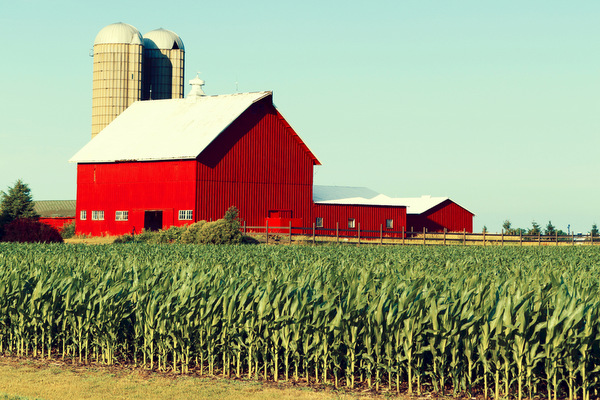Share This
Related Posts
Tags
Agriburbia
By Leah Etling on Feb 14, 2014 in News | 1 Comment

Agriburbia hearkens back to the days when the American family farm was a way of life.
The community garden just isn’t big enough anymore.
And when it comes to creating a residential neighborhood that will embody sustainable practices, the local food movement, and love of open spaces, agriburbia has come forward as an exciting alternative.
Never heard of it? Neither had I, until a few weeks ago. But just the name agriburbia instantly interested me. I pictured strip malls being razed for cornfields in the suburbs, a farm stand on every corner, organic, local-sourced salad on every dinner table. Impossible utopia? Not quite.
Agriburbia, it turns out, is already thriving in numerous states around the nation. My research revealed experiments with the model in Virginia, Vermont, North Carolina, Idaho, Illinois, Georgia, Wisconsin, Colorado and California. It’s also catching on in Canada, where it’s the focus of an academic research effort.
“The resulting agriburban zones, defined as suburban forms in which agriculture plays a significant role, are of increasing importance as a site of local food production, of affordable housing on the urban fringe, and of settlement regions for migrants from agrarian backgrounds,” notes the Agriburban Research Center at the University of Fraser Valley.
The logic is simple: growing food in far-off places, and shipping it to grocery stores, only decreases quality and increases cost. Once upon a time in North America, we grew the produce and raised the animals we needed to live right in our own communities. As cities and suburbs grew fast and furious, farms were pushed further and further to the outskirts. The agriburbia movement aims to bring them back into view.
The Urban Land Institute estimates that up to 200 such projects are developed or in progress. According to Agriburbia.com, there are 3,000 acres of such land in or under development and production.
Imagine wandering out onto the back porch to be greeted not by a useless bed of roses, but a wholesale volume seasonal garden, cared for by communal effort and producing enough produce to feed not only the houses of the neighborhood, but to be sold within the surrounding community.
Individual agriburbia models differ in how the agricultural space is integrated with residential housing. In some, residents can get actively involved on the farm – which is typically a mid-scale, commercially viable ag operation – and receive fresh food in trade for their labor. Don’t want to work? Not a requirement. You can purchase your produce and not perform manual labor.
One exceptional example of the model takes place at Prairie Crossing in Grayslake, Illinois. Here, residents don’t participate in the farming activities, but the adjacent 100-acre farm, Sandhill Family Farms, produces food for a CSA (Community Supported Agriculture) share plan with 350 customers. Learning Farm activities introduce residents to small-scale farm and food production options they can implement in their own backyards.
Demand for the lifestyle is evident. Prairie Crossing easily sold out all of its 359 homes and is now marketing 36 condominiums. It’s not a new community, and finds itself serving as a role model for up-and-coming agriburbia efforts around the nation.
As one homeowner put it when speaking to “Midwest Living”: “I don’t look at Prairie Crossing as anything new…It’s a return to creating a community network of support that was part of American culture before World War II.”
Would you consider life in an agriburbia community? What do you think are the most valuable aspects of the concept?

Agriburbia sounds marvelous. It’s a return to a system that made sense! I think there is a place for big agriculture; if local farms are all knocked out by weather, having a large distant farm to source from makes sense. But they should be the exception, not the rule.
I would love to in a place that was more connected with natural environment. I hope to see these sorts of communities become more common.